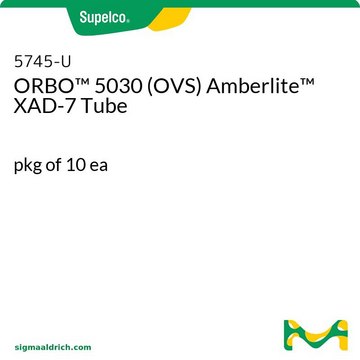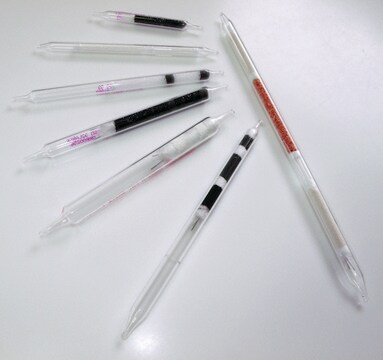20349
ORBO™ 47 Amberlite™ XAD®-7 specially treated, 100/50 mg
W,W,W separators, O.D. × L 6 mm × 90 mm, pkg of 50 ea
About This Item
Recommended Products
material
W,W,W separators
Quality Level
Agency
NIOSH 2546
OSHA 32,110
product line
Amberlite™
ORBO™
composition
Bed A, 100 mg
Bed B, 50 mg
packaging
pkg of 50 ea
manufacturer/tradename
ORBO™ 47
technique(s)
active air sampling: suitable
O.D. × L
6 mm × 90 mm
matrix
XAD-7 (specially treated)
application(s)
air monitoring
environmental
industrial hygiene
General description
Legal Information
Not finding the right product?
Try our Product Selector Tool.
Storage Class Code
11 - Combustible Solids
WGK
WGK 3
Flash Point(F)
Not applicable
Flash Point(C)
Not applicable
Regulatory Listings
Regulatory Listings are mainly provided for chemical products. Only limited information can be provided here for non-chemical products. No entry means none of the components are listed. It is the user’s obligation to ensure the safe and legal use of the product.
JAN Code
20349:
Choose from one of the most recent versions:
Certificates of Analysis (COA)
Sorry, we don't have COAs for this product available online at this time.
If you need assistance, please contact Customer Support.
Already Own This Product?
Find documentation for the products that you have recently purchased in the Document Library.
Customers Also Viewed
Our team of scientists has experience in all areas of research including Life Science, Material Science, Chemical Synthesis, Chromatography, Analytical and many others.
Contact Technical Service








